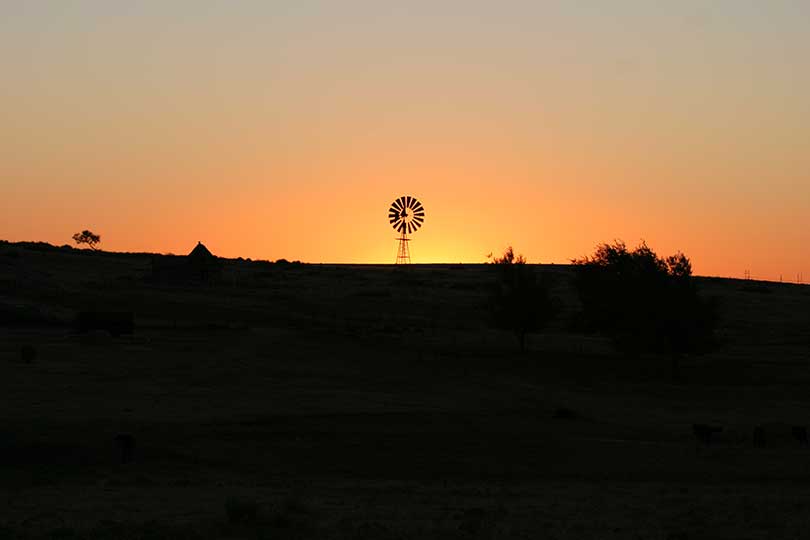By Jessica Domel
News Editor
A South Texas groundwater district is making history. In what is believed to be a first-of-its-kind move, the Guadalupe Groundwater Conservation District in Seguin is implementing a model that allows landowners to decide what can be done with the water underneath their property.
The district, according to its secretary Hilmar Blumberg, uses a three-dimensional model that applies digital surface maps to water saturation thickness.
“Using computers, using maps of the saturated section of the Carrizo (Aquifer), we came in and built models and then distributed water rights according to everyone’s fair share of a reasonable limit, of a sustainable limit, of extraction every year based on what percentage of the saturated sand in our district aquifer was underneath individual pieces of property,” Blumberg said in an interview with the Texas Farm Bureau Radio Network.
The district used 16-by-16 foot cells on the surface that were projected down through the saturated sections of the aquifer.
“It’s very, very finely tuned. It’s very fair, and it distributes these water rights,” Blumberg said.
The groundwater district decided to implement the system after realizing major water producers in surrounding communities were purchasing a few leases and then attempting to take the majority of available water in the Carrizo-Wilcox Aquifer.
The new system protects landowners by recognizing the 2012 decision by the Texas Supreme Court that water is a private property and groundwater regulations must afford each landowner a fair share of the aquifer. The same legal standard that applies to oil and gas.
“It allows these water rights, once we’ve distributed them, pro rata depending on how much you have underneath the property, to allow these water rights to be transferred to any producing well in our district.
“Everyone in the surface is now in the marketplace,” Blumberg said.
To ensure the aquifer isn’t being pumped beyond its recharge abilities, the district has allotted only five-eighths of the aquifer’s recharge.
“We’re very conservationally-minded here,” Blumberg said. “We’re acutely sensitive to the fair distribution of water rights and sustaining a viable marketplace that allows everyone to monetize, to capitalize on what is private property—their underground water.”
Gabe Collins, an expert at the Baker Institute for Public Policy at Rice University, wrote about the groundwater conservation district’s move and how it applies to private property rights.
“When Hilmar and I wrote up this case study, one of the things that struck us, and one of our key motivations for doing this, is frankly adopting a three-dimensional management system where you set a production cap and then you manage your withdrawals—in this case, based on recharge,” Collins said. “You’re actually strengthening people’s private property rights and their water.”
When the groundwater district planned the water setup in 2004, water was not yet confirmed as private property in Texas.
“Hilmar and his other board members had a sense that was coming down the pipe,” Collins said.
In 2012, the Texas Supreme Court affirmed that surface owners, unless they’ve severed their groundwater state, owned the groundwater beneath their land as private property.
“One of the things we definitely see in the medium- and longer-term in the three-dimensional water management system is you obviously have to make tweaks based on various local, political and hydrological characteristics that may vary between aquifers,” Collins said.
In some cases, several groundwater conservation districts may have different approaches for the same aquifer.
Blumberg believes the three-dimensional model the Guadalupe Groundwater Conservation District is using could be a fair way to ensure all private property owners’ needs are met fairly.
“I think it could be applied to almost any aquifer in Texas,” Blumberg said.

